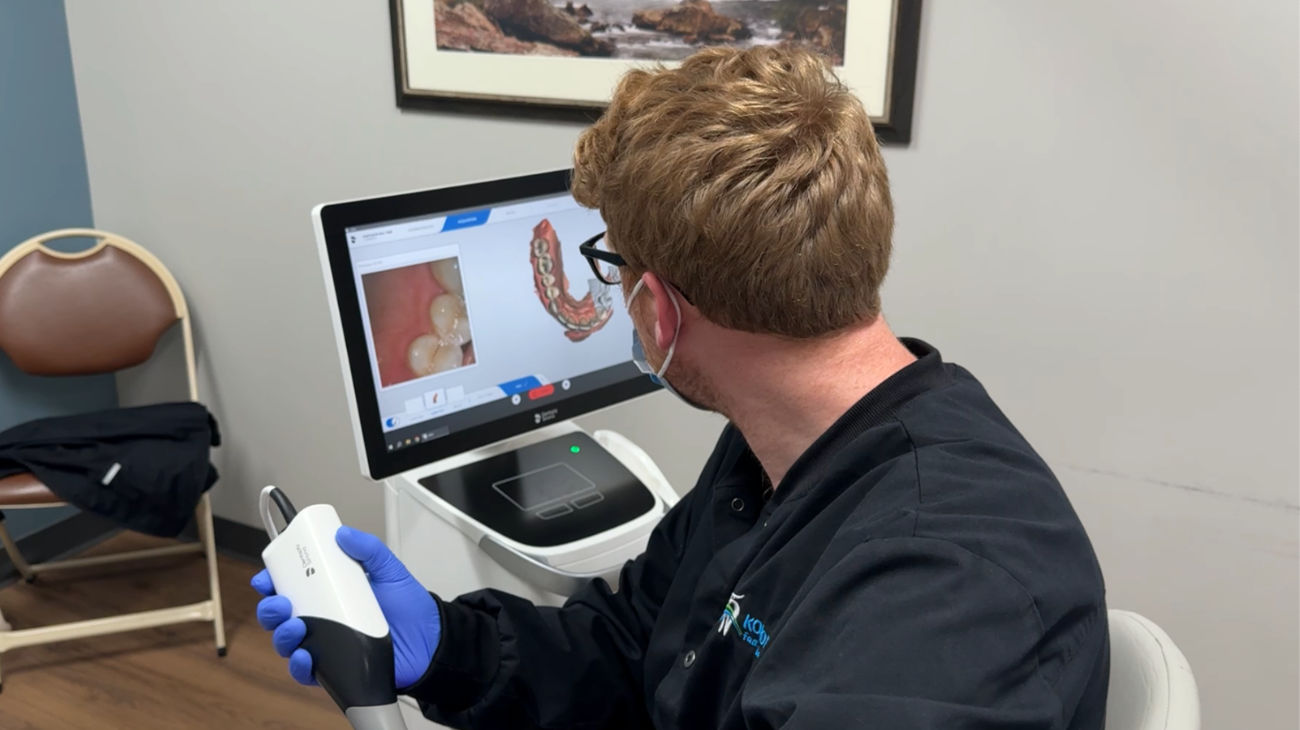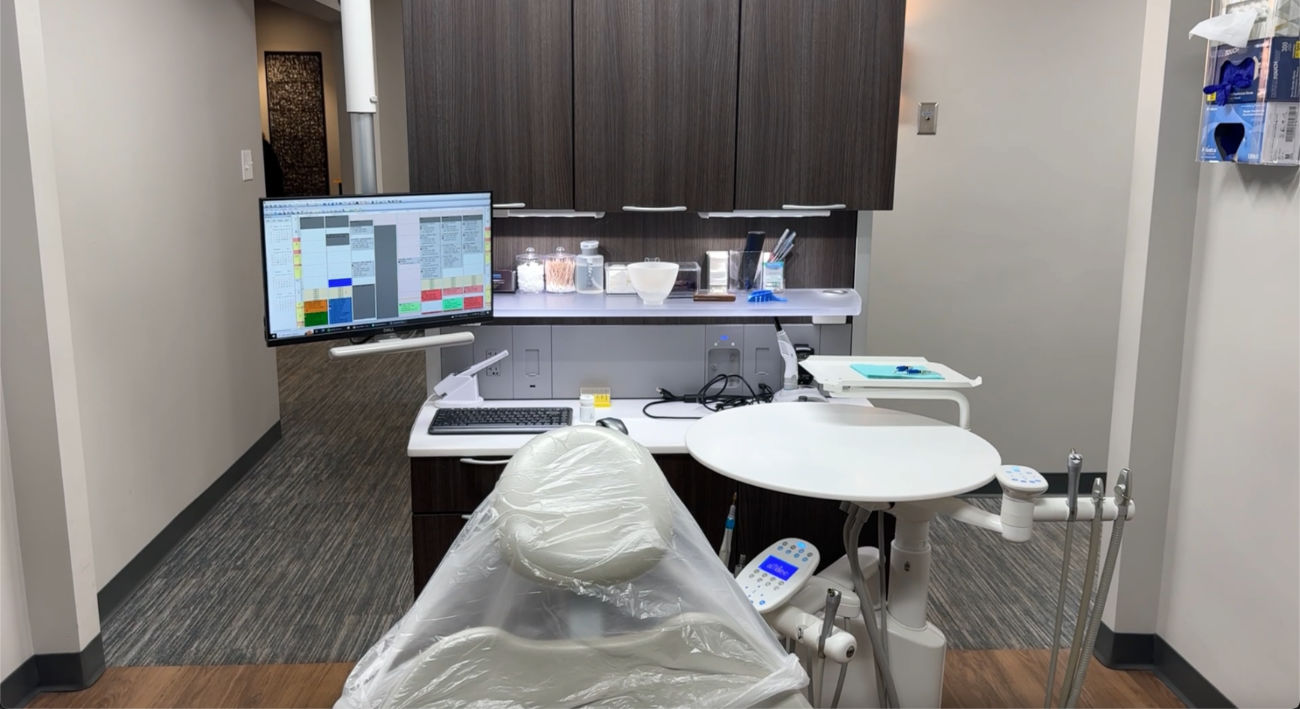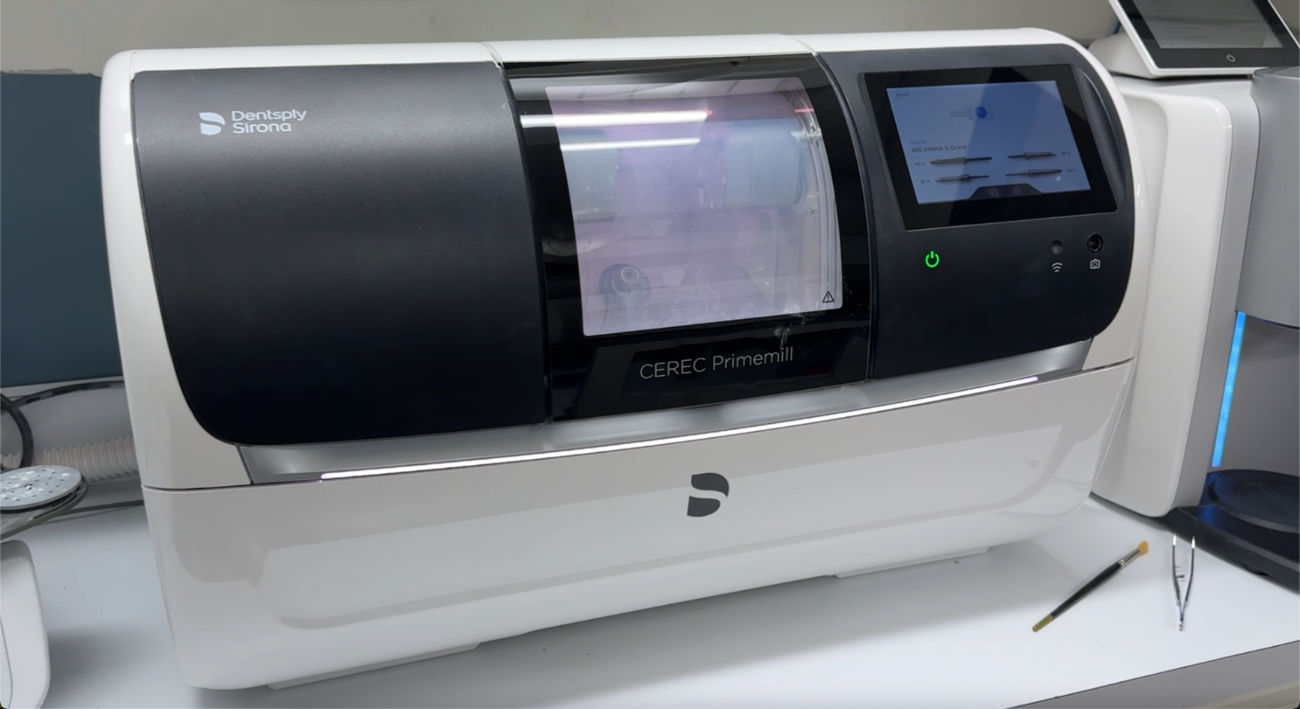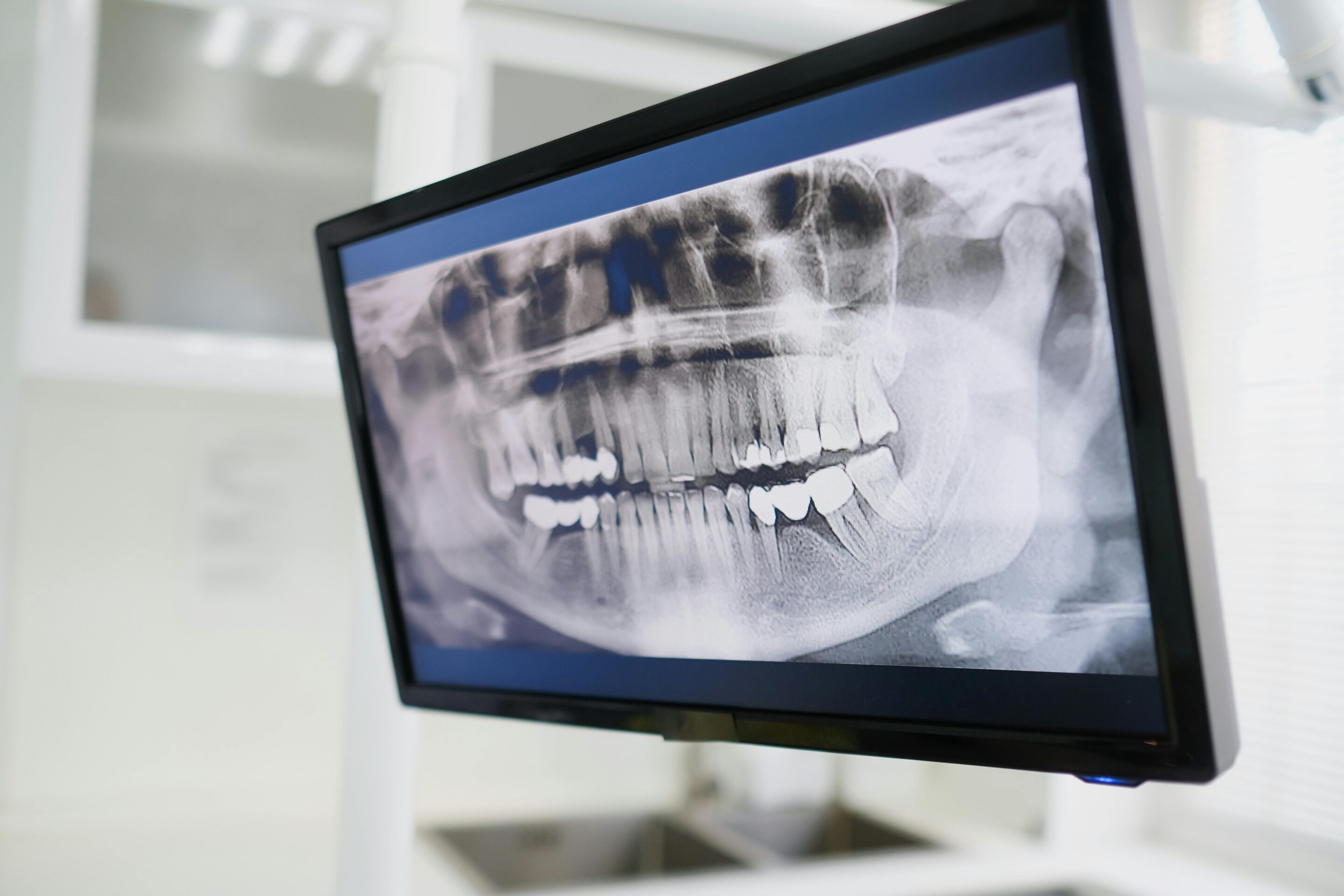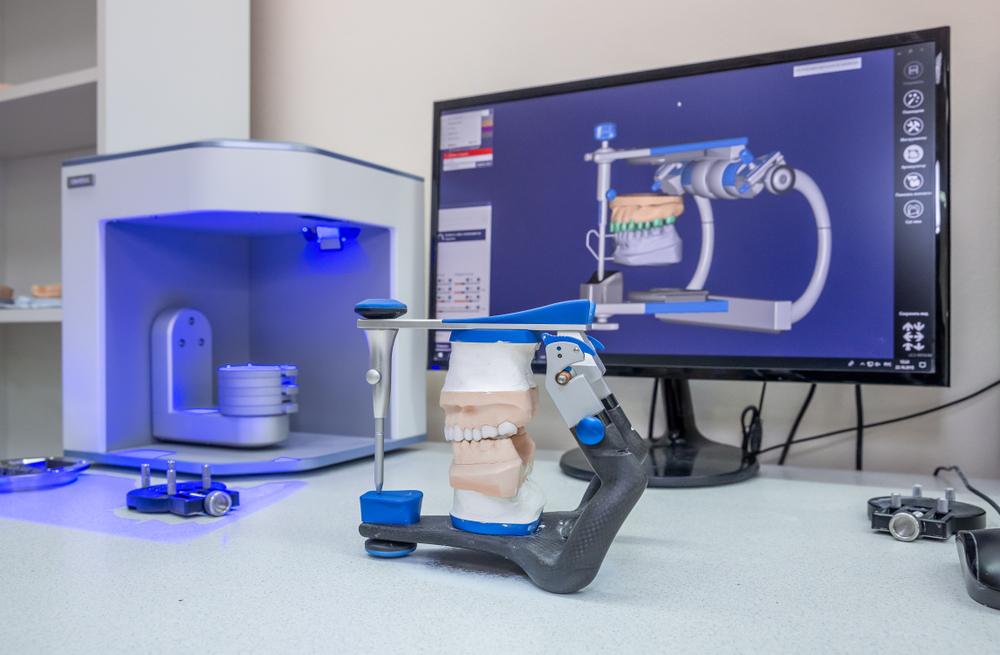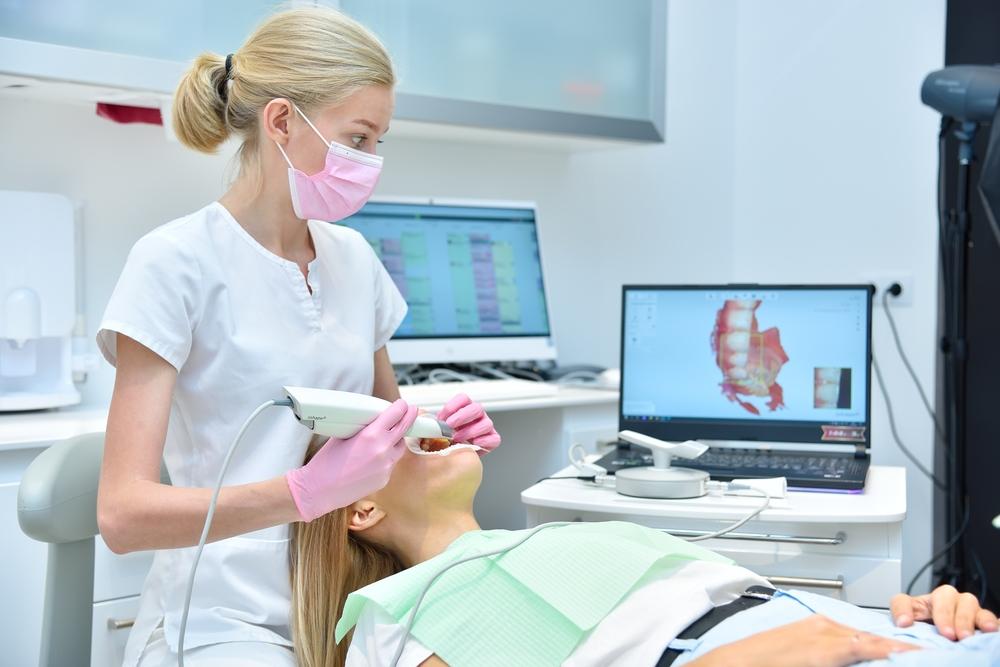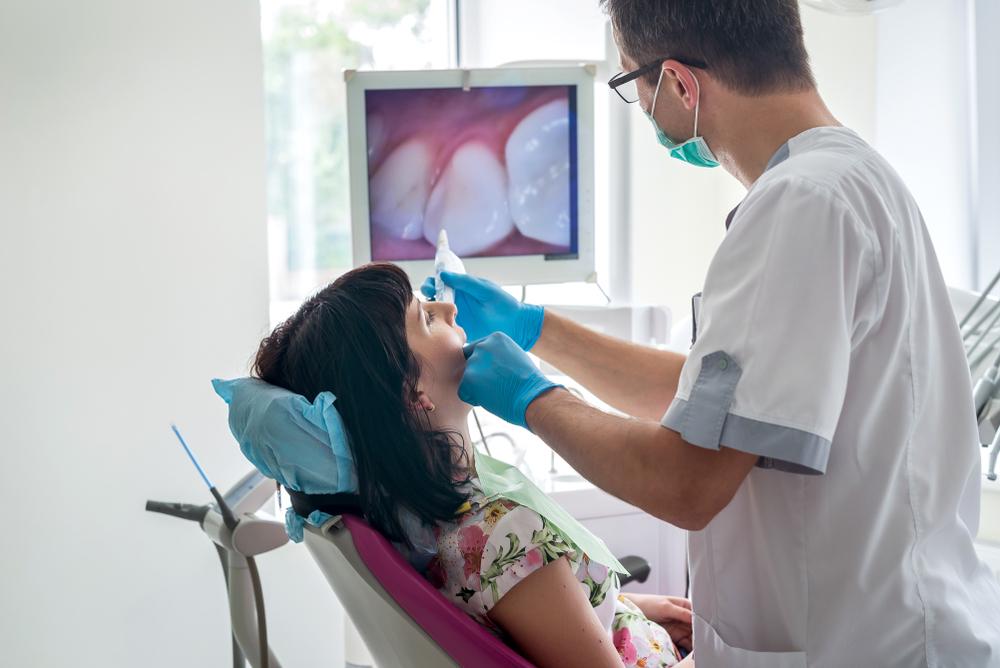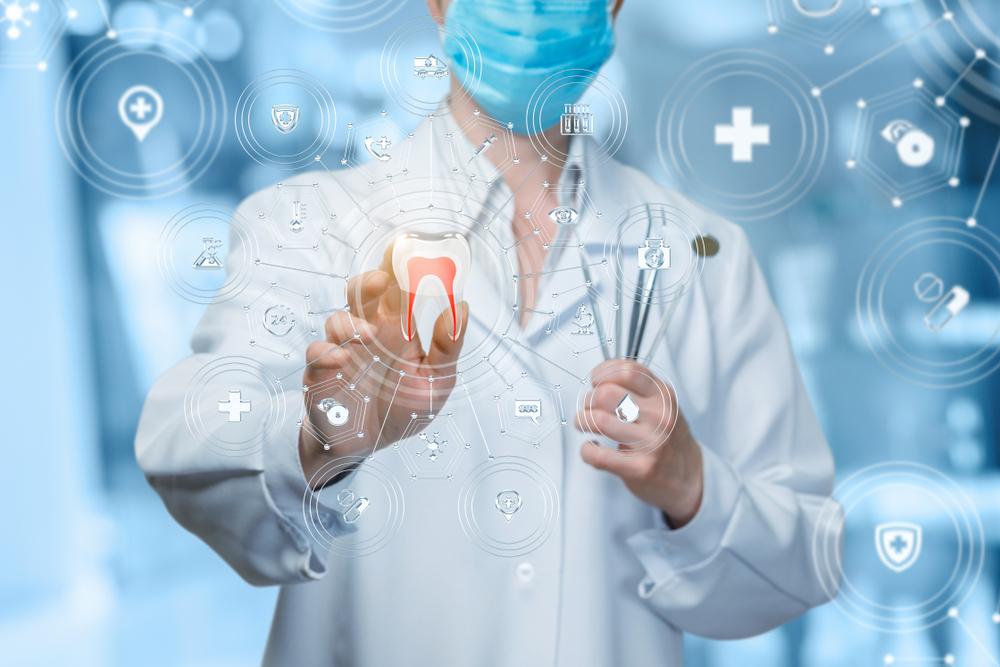Advanced Dental Technology
Digital X-rays, CBCT, 3-D Printing, Intraoral Scanning, Cameras, and Loupes

In the modern landscape of healthcare, dental technology stands as a shining beacon of innovation and transformation. Dentistry, once characterized by traditional techniques and manual procedures, has now undergone a revolution propelled by the relentless march of technology. This transformation is not only reshaping the way dental professionals work but also significantly enhancing the experiences of patients in the dentist’s chair.
Our journey begins by acknowledging the profound impact of dental technology. It’s a realm where precision meets artistry, where diagnostic accuracy soars to new heights, and where patient comfort takes center stage. Here, we will venture into the heart of this transformation, illuminating the path where digital X-rays unveil hidden mysteries, where Cone Beam Computed Tomography (CBCT) brings a 3-D perspective to diagnostics, and where 3-D printing crafts dental solutions with unmatched precision.
We’ll delve into the world of intraoral scanning, a technology that eliminates the discomfort of messy impressions, and explore the role of intraoral cameras in enhancing communication between patients and dentists. Finally, we’ll magnify the precision with loupes, shedding light on their microscopic world.
Buckle up as we embark on a journey through the world of dental technology, where every innovation has a role, every advancement has a purpose, and the future of oral healthcare is being crafted with unparalleled precision and care.
FAQ’S
Digital X-Rays: Illuminating the Future of Diagnostics
In the ever-advancing world of dental technology, digital X-rays emerge as a brilliant beacon of progress, illuminating the future of diagnostics. They represent a substantial departure from traditional film-based X-rays, bringing a multitude of benefits that not only enhance the diagnostic process but also prioritize the safety of both patients and dental professionals.
Benefits of Digital X-Rays:
Reduced Radiation Exposure: One of the most noteworthy advantages of digital X-rays is the significantly reduced radiation exposure they entail. Traditional film-based X-rays relied on higher levels of radiation to produce images, whereas digital X-rays utilize a fraction of the radiation, minimizing the potential health risks associated with X-ray exposure.
1. Enhanced Image Quality: Digital X-rays offer exceptional image quality, resulting in sharper, more detailed diagnostic images. This improved clarity empowers dental professionals to detect even the most minute dental issues, enabling earlier intervention and more precise treatment planning.
2. Speed and Efficiency: Digital X-rays provide rapid results, eliminating the need for time-consuming chemical processing required with traditional film-based X-rays. This expedites the diagnostic process, allowing dentists to make informed decisions swiftly.
3. Environmentally Friendly: Unlike traditional film X-rays that rely on chemical development and disposal, digital X-rays are eco-friendly. They produce no hazardous waste, making them a more sustainable choice.
4. Ease of Storage and Retrieval: Digital X-ray images are stored electronically, simplifying organization and retrieval. Dentists can access a patient's complete imaging history at the touch of a button, promoting seamless continuity of care.
Role in Precise Diagnostics and Reducing Radiation Exposure:
Digital X-rays are at the forefront of precise dental diagnostics. They offer a level of accuracy that was previously unattainable. Their exceptional image quality and the ability to zoom in on specific areas of concern enable dentists to detect issues at their earliest stages.
Furthermore, the reduction in radiation exposure is a key aspect of patient safety. With digital X-rays, patients experience significantly less radiation exposure compared to traditional film X-rays, making routine dental imaging even safer.
Digital X-rays have revolutionized dental diagnostics by enhancing image quality, efficiency, and safety. Their role in providing precise diagnostic information is invaluable, ensuring that patients receive the highest standard of care while minimizing radiation exposure. Next, we'll journey into the world of Cone Beam Computed Tomography (CBCT) and its 3-D perspective on diagnostics.
CBCT (Cone Beam Computed Tomography): A 3-D Perspective
In the dynamic realm of dental technology, Cone Beam Computed Tomography (CBCT) emerges as a game-changer, offering a profound shift in the way dental diagnostics and treatment planning are conducted. CBCT brings a three-dimensional perspective to imaging that unveils a wealth of information previously hidden in conventional two-dimensional scans.
Introducing CBCT and Its Advanced Imaging Capabilities:
CBCT is a revolutionary imaging technique that employs a cone-shaped X-ray beam to capture high-resolution, three-dimensional images of the oral and maxillofacial regions. Unlike traditional X-rays, which produce flat, 2-D images, CBCT generates a detailed 3-D map of the targeted area.
This technology allows dental professionals to examine oral and maxillofacial structures from virtually any angle, providing an in-depth view of bones, teeth, airways, nerves, and soft tissues. CBCT scans are instrumental in diagnosing a wide range of conditions, from dental abnormalities and impacted teeth to complex maxillofacial pathologies.
Revolutionizing Dental Diagnostics and Treatment Planning:
The transformative power of CBCT lies in its ability to revolutionize dental diagnostics and treatment planning. Here's how:
1. Precision in Diagnosis: CBCT offers unparalleled accuracy in identifying dental and maxillofacial conditions. Dentists can pinpoint issues at their early stages, leading to more effective treatments and improved patient outcomes.
2. Surgical Planning: For complex procedures like dental implant placement or orthognathic surgery, CBCT provides an invaluable tool for precise surgical planning. Dentists can visualize the patient's anatomy in 3-D, enabling them to plan procedures with utmost precision.
3. Reduced Radiation Exposure: While CBCT employs X-rays, it does so with a significantly lower radiation dose compared to traditional medical CT scans. This ensures patient safety while delivering the diagnostic insights required.
4. Enhanced Patient Understanding: CBCT images provide a clear visual representation of dental conditions and treatment plans, making it easier for patients to comprehend their diagnosis and the recommended procedures.
CBCT's 3-D perspective on imaging has reshaped the landscape of dental diagnostics and treatment planning. With its advanced imaging capabilities, it empowers dental professionals to make more accurate diagnoses, plan intricate procedures with precision, and ensure the safety and understanding of their patients. Our journey through dental technology continues as we explore the world of 3-D printing and its role in crafting dental solutions with unmatched accuracy.
3-D Printing: Crafting Dental Solutions with Precision
In the era of dental technology, 3-D printing has risen as a transformative force, reshaping the dental industry and ushering in a new era of precision and efficiency. This technology isn't just a tool; it's a revolution that's changing the way dental solutions are designed and created.
Transforming the Dental Industry:
3-D printing, also known as additive manufacturing, has revolutionized the dental industry by offering a more streamlined and precise approach to crafting dental solutions. Traditional methods often involve manual labor and a series of time-consuming steps. In contrast, 3-D printing is a highly automated process that utilizes digital files to construct dental devices with incredible accuracy.
Applications in Dental Solutions:
1. Crowns and Bridges: 3-D printing is becoming the go-to method for creating crowns and bridges. It offers a level of precision that's hard to achieve through traditional techniques. These custom-fitted restorations not only enhance aesthetics but also improve oral functionality.
2. Orthodontic Devices: In the field of orthodontics, 3-D printing is used to produce clear aligners and orthodontic appliances. These devices are custom-made for each patient, offering greater comfort and effectiveness in the journey to a straighter smile.
3. Surgical Guides: 3-D printing is also instrumental in the creation of surgical guides. These guides assist dentists in performing precise dental implant surgeries. They ensure that the implants are placed in the optimal position, enhancing success rates and reducing the risk of complications.
4. Prosthetics: From dentures and partials to custom nightguards, 3-D printing has revolutionized the field of prosthetic dentistry. It allows for the creation of highly customized prosthetic devices that fit comfortably and function effectively.
The benefits of 3-D printing extend beyond precision; it also reduces material waste and speeds up production times. This translates into cost savings and quicker turnaround for patients, making it a win-win for both dental professionals and their patients.
3-D printing is transforming the dental industry by offering unmatched precision and efficiency. Its applications in creating crowns, bridges, dental implants, orthodontic devices, surgical guides, and prosthetics are revolutionizing the field, providing patients with custom-made dental solutions that ensure optimal oral health and aesthetics. Our exploration of dental technology now leads us to the realm of intraoral scanning, a technology that eliminates the discomfort of messy impressions.
Intraoral Scanning: Beyond Messy Impressions
In the realm of modern dentistry, intraoral scanning emerges as a true game-changer, transcending the inconveniences of traditional messy impressions. This technology not only simplifies the creation of digital impressions but also brings a world of benefits, from enhancing patient comfort to elevating treatment accuracy.
Benefits of Intraoral Scanning in Creating Digital Impressions:
1. Precision and Accuracy: Intraoral scanners are renowned for their precision in capturing digital impressions. They provide highly detailed, 3-D images of the patient's oral structures, ensuring that every nook and cranny is accounted for. This level of accuracy is unparalleled, reducing the risk of errors that can occur with traditional impressions.
2. Improved Workflow: Intraoral scanning streamlines the entire workflow for dental professionals. It eliminates the need for physical molds and shipping them to dental labs. The digital impressions can be instantly transmitted electronically, expediting the fabrication of restorations or orthodontic devices.
3. Enhanced Communication: Intraoral scanning facilitates clear and efficient communication between dental professionals and dental labs. The digital files can be easily shared, allowing for better collaboration and quicker turnaround times for custom restorations.
Enhancing Patient Comfort and Treatment Accuracy:
1. Elimination of Gag Reflex: One of the most significant advantages of intraoral scanning is that it eliminates the discomfort and potential gag reflex often associated with traditional impressions. Patients no longer have to endure the messiness and awkwardness of impression materials.
2. Shorter Chair Time: Intraoral scanning significantly reduces the time spent in the dental chair. The process is quicker and more comfortable, making dental visits less stressful for patients.
3. Greater Treatment Accuracy: The precision of intraoral scanning results in a better fit for crowns, bridges, and orthodontic devices. This leads to improved treatment outcomes and a higher level of patient satisfaction.
4. Visual Feedback: Intraoral scanning provides patients with the unique experience of seeing their digital impressions in real-time. This visual feedback can enhance their understanding of their oral health and proposed treatment plans.
Intraoral scanning is a remarkable advancement in dentistry that transcends traditional impressions by offering unparalleled precision, improving workflow, and enhancing patient comfort. Its role in eliminating the discomfort of messy impressions and elevating treatment accuracy is a testament to the ever-evolving world of dental technology. As our journey continues, we delve into the world of intraoral cameras and their pivotal role in enhancing communication between patients and dentists.
Intraoral Cameras: A Visual Aid for Precision
In the realm of modern dentistry, intraoral cameras stand as remarkable visual aids that elevate patient education, enhance communication, and play a pivotal role in treatment planning. These small, high-tech devices offer a window into the oral world, allowing both patients and dental professionals to gain a deeper understanding of dental conditions and treatment options.
Significance of Intraoral Cameras in Patient Education:
1. Visual Clarity: Intraoral cameras provide patients with a clear, real-time view of their oral cavity. This visual clarity allows patients to see precisely what their dentist is seeing, creating a stronger connection to their own oral health.
2. Education through Visualization: Patients often find it challenging to comprehend oral conditions and treatment needs based solely on verbal descriptions. Intraoral cameras bridge this gap by visually presenting the issues. Patients can witness the problems and understand the necessity for specific treatments, fostering a sense of empowerment in their healthcare decisions.
Enhancing Communication and Treatment Planning:
1. Informed Decision-Making: Intraoral cameras promote informed decision-making. When patients can see the condition of their teeth and gums up close, they are more likely to actively participate in their treatment plan and make well-informed choices about their oral health.
2. Treatment Plan Collaboration: These devices also facilitate collaborative treatment planning. Patients and dental professionals can discuss and visually assess treatment options together. This collaboration builds trust and ensures that treatment plans are tailored to the patient's needs and preferences.
3. Precise Diagnosis: Intraoral cameras assist dentists in making precise diagnoses. The magnified, high-definition images captured by these cameras reveal even the subtlest dental issues, allowing for more accurate and effective treatment planning.
4. Follow-Up and Monitoring: Intraoral cameras are instrumental in monitoring the progress of ongoing treatments. Patients can see changes and improvements in their oral health, motivating them to continue with recommended therapies.
5. Record Keeping: The images captured by intraoral cameras provide a visual record of a patient's oral health over time. These records aid in tracking changes and improvements, guiding long-term treatment planning.
Intraoral cameras are invaluable tools that bring transparency and precision to patient education, communication, and treatment planning. They empower patients to actively participate in their oral health decisions and enable dental professionals to provide accurate diagnoses and tailored treatment plans. Our journey through the world of dental technology now takes us to the realm of loupes magnification, a technology that enhances precision in dental procedures.
Loupes Magnification: Precision at the Microscopic Level
In the intricate world of modern dentistry, precision is paramount, and even the tiniest details can make a world of difference. This is where loupes magnification enters the stage, offering dentists a view at the microscopic level, enabling them to perform intricate procedures with unmatched accuracy. These optical instruments are more than just tools; they are the eyes of a dental professional, delivering precision and reducing the strain that comes with meticulous work.
How Loupes Magnification Aids Dentists in Performing Intricate Procedures:
1. Enhanced Visual Clarity: Loupes magnify the visual field, enabling dentists to see minute details with exceptional clarity. This enhanced vision is crucial when working on delicate procedures, such as root canals, intricate restorations, or microsurgery.
2. Improved Diagnosis: Loupes allow for more accurate diagnosis of dental issues, as dentists can examine oral structures at a much finer level of detail. This ensures that potential problems are identified early, leading to more effective treatment plans.
3. Elevated Precision in Procedures: When performing dental procedures, precision is essential. Loupes magnification enables dentists to work with meticulous accuracy, ensuring that every step is executed flawlessly.
4. Reduced Eye Strain: The strain of leaning over patients for extended periods can take a toll on a dentist's posture and vision. Loupes alleviate this strain by allowing dentists to maintain a more natural and comfortable posture.
Improving Precision and Reducing Strain
1. Customization: Loupes are available in various magnification levels, allowing dentists to choose the level of magnification that best suits their needs. This customization ensures that they can work with the precision required for their specific procedures.
2. Ergonomics: Loupes are designed with ergonomics in mind, promoting a healthier and more comfortable posture. This reduces the risk of musculoskeletal issues that can arise from long hours of dental work.
3. Enhanced Efficiency: The precise vision offered by loupes enhances the efficiency of dental procedures. Dentists can complete treatments with greater accuracy and in less time, benefitting both the practitioner and the patient.
4. Improved Patient Experience: Patients also benefit from the precision and efficiency that loupes provide. They experience quicker, more accurate treatments, resulting in reduced discomfort and better treatment outcomes.
As we conclude our exploration of loupes magnification in the realm of dentistry, it becomes clear that these optical instruments are more than just tools; they are the key to performing intricate procedures with unparalleled precision. Their role in improving precision and reducing strain ensures that dental professionals can offer the highest level of care to their patients while maintaining their own well-being.
The Future of Dentistry: How Technology Is Transforming Patient Care
As we delve into the dynamic landscape of modern dentistry at Kokomo Family Dentistry, one undeniable truth emerges—technology has become the driving force behind a transformative shift in oral healthcare. It is redefining the way dental professionals at Kokomo Family Dentistry operate and the way patients experience dental care. The future of dentistry at Kokomo Family Dentistry is being sculpted by the advancements of today, and this transformation holds a promise that extends its benefits to both dental professionals at Kokomo Family Dentistry and the patients they serve.
The Overarching Impact of Dental Technology on Oral Healthcare:
1. Precision and Efficiency: Dental technology at Kokomo Family Dentistry, from 3-D printing to loupes magnification, has ushered in an era of precision and efficiency. Procedures are executed with meticulous accuracy, reducing the margin for error and delivering optimal results.
2. Enhanced Patient Experience: Patients at Kokomo Family Dentistry no longer dread the discomfort of messy impressions or the uncertainty of oral conditions. They are empowered through visual aids like intraoral cameras and educated about their oral health, fostering a sense of control and understanding.
3. Improved Diagnosis and Treatment Planning: The advanced diagnostic capabilities of technology at Kokomo Family Dentistry ensure that dental professionals can identify issues early, resulting in more effective treatment plans. Collaboration between dentists and patients is streamlined through digital communication.
Benefits to Dental Professionals and Patients:
1. Mutual Trust: The transparency that technology offers builds mutual trust between dental professionals at Kokomo Family Dentistry and patients. Patients trust that they are receiving the highest standard of care, while dental professionals have confidence in their ability to diagnose and treat effectively.
2. Enhanced Efficiency: Dental procedures at Kokomo Family Dentistry are completed with greater efficiency, reducing chair time for patients and allowing dental professionals to see more patients or devote more time to complex cases.
3. Personalized Treatment: Technology enables highly personalized treatment plans at Kokomo Family Dentistry. Patients receive care that is tailored to their specific needs and preferences, enhancing their satisfaction and oral health outcomes.
4. Improved Outcomes: The precision and accuracy of dental technology at Kokomo Family Dentistry lead to improved treatment outcomes. Patients experience less discomfort, fewer complications, and faster recoveries.
The future of dentistry at Kokomo Family Dentistry is a realm where technology plays a leading role in redefining patient care. This transformation enhances precision, empowers patients, and fosters well-being among dental professionals. The benefits of dental technology extend to both sides of the treatment chair at Kokomo Family Dentistry, promoting mutual trust, personalized treatment, and improved outcomes. It is a future where oral healthcare is not only effective but also more comfortable, transparent, and empowering for all involved. As we conclude our journey through the world of dental technology at Kokomo Family Dentistry, we step into the realm of continued learning and adaptation, where professionals remain at the forefront of innovation for the betterment of oral health.
Conclusion:
In the ever-evolving field of dentistry, the importance of staying updated with dental technology cannot be overstated. It is a journey of perpetual learning and adaptation, a commitment to the pursuit of precision, efficiency, and excellence in oral healthcare. As we conclude this exploration of dental technology, the path forward is clear—embrace these innovations, for they hold the key to a brighter, more precise future in oral healthcare.
The future of dentistry is illuminated by the advancements we have explored today. It is a future where oral healthcare is more precise, efficient, and comfortable than ever before. Our dental professionals at Kokomo Family Dentistry are committed to staying at the forefront of this transformation, armed with tools that empower us to deliver the highest standard of care to you, our patients. By staying current with the latest technology, we ensure that your patients receive the best possible care. We embrace this future, for it holds the promise of healthier smiles and more satisfying patient-professional relationships. The journey of innovation in dentistry continues forward, and by walking together, we ensure a brighter and more precise future for oral healthcare.





Let’s Get Started
Call Us:
Office Hours :
Mon-Fri: 8:00am-5:00pm
Email Us :
appointments@kokomodentistry.com
Address :
604 East Boulevard, Suite A, Kokomo, IN 46902

